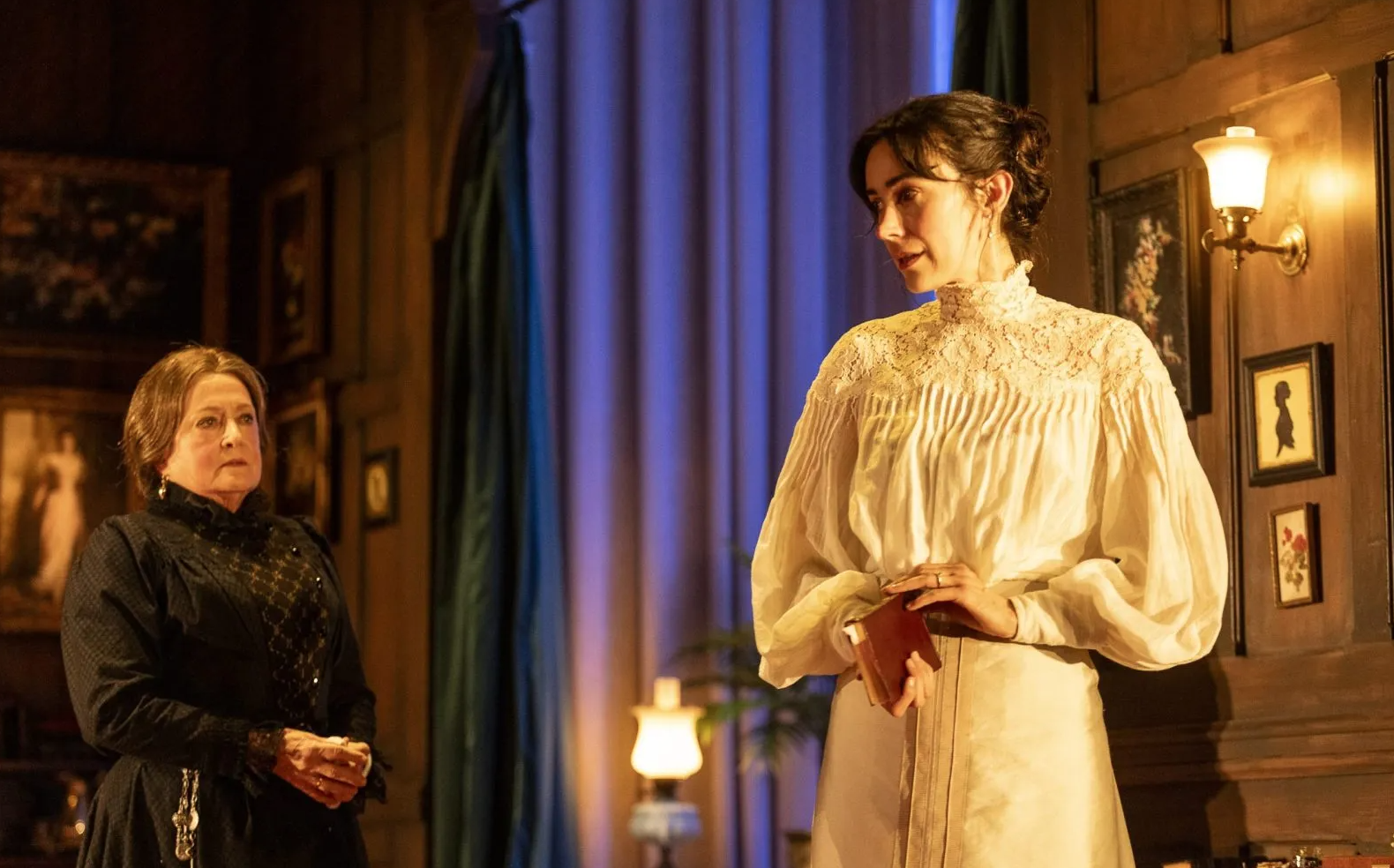Pearls are a Girl’s Best Friend: Gaslight’s opening night at the Melbourne Comedy Theatre
The concept of gaslighting – a sinister manipulation tactic used to erode a victim’s confidence by leading them to doubt their own sanity, intelligence, and self-worth –has sustained increased usage after entering everyday vernacular in 2020.
The term originated from Patrick Hamilton’s 1938 British stage play ‘Gas Light’, which has opened in Melbourne for a strict three-week season.
Directed by Lee Lewis, the modernised thriller follows a seemingly harmonious relationship – albeit traditional and ruled by old-fashioned norms – between husband Jack (Toby Schmitz) and Bella (Geraldine Hakewill).
The lavish set design and the honey-coloured lighting scheme work in tandem with the costuming to amplify ‘film noir’ elements while the gaslights adorning the lounge pay an appropriate homage to the show’s essence. Not only that: Hakewill’s character exudes elements of the ‘damsel in distress trope’ with her unwavering loyalty, dainty movements, naïvety, shortened breaths, and a hand clutched to her stomach.
The plot continues to churn over the course of the show, activating frustration among the audience, as well as establishing an acute understanding as to why doting wife Bella is slowly driven to the point of madness.
Jack’s malevolence slowly increases from purposely hiding a painting, then the receipt for the grocer’s bill, and accusations of Bella stealing a patron’s bracelet at a party.
The lie Jack concocts to account for his attic rummaging activities under the guise of being at work eventually unravels.
Hakewill seamlessly shifts between paranoid and assured, with the occasional eye twitch and exaggerated gasp.
Bella urges Jack to let her borrow his gun after hearing strange noises from the attic. Their veteran maid Elizabeth (Kate Fitzpatrick) is of no help, as her hearing ailment meant she couldn’t intervene in the initial burglary which cost the previous homeowner, Alice, her life.
Unbeknownst to her, this happened at the hands of Jack.
Fitzpatrick portrays Elizabeth similarly to Cavallaro’s character, with a dry wittiness. Her close relationship and loyal servitude to Bella is evident, and she ends up playing a pivotal role in Jack’s demise.
Although she claims to not hear Jack’s footsteps in the attic, she is sympathetic to Bella’s fear and accompanies her at night – the time when she is most afraid.
When questioned by Jack about the missing painting, she responds in a way that almost diffuses Jack’s claims of Bella’s so-called ‘delusions’, and it is a question the audience has:
“Why would she take things from her own house and move them about?”
This is where Schmitz maintains blinding charisma while infantilizing Bella, telling Elizabeth she must be ‘kind’ and ‘gentle’.
It becomes apparent why the new maid Nancy is simultaneously a disruption and a resolution. She convinces Bella the noises are in her head and does an incredible impression of Bella’s gullibility, a humorous moment in the play.
Nancy, the boorish maid (Courtney Cavallaro), shares the same motive as Jack which of course, is to frame Bella as mentally unstable, so she can find the rubies Jack had failed to find during the initial burglary.
Schmitz’s character has an affinity for trinkets, which is subtly foreshadowed by incessant badgering once he sees Bella’s pearls.
Schmitz’s eccentric physicality and charisma are what enable him to be seen initially, as a somewhat likeable character.
Jack is psychopathic or may even be perceived as sociopathic, but somewhat frumpish, as if he entered a life of deception out of necessity, not intentionality.
The play’s culmination is where we see Hakewill’s character outwit her romantic counterpart. She removes the firing pin of Jack’s gun before being faced with it.
Hakewill, Schmitz, Fitzpatrick and Cavallaro portray their characters with immense strength in this production. You would be crazy to miss it.
You can find the original article here.
